What’s Up?
Friday morning was gorgeous with clear skies and a wind from the east. I spent the first hour plus dealing with my Green-Heron-fishing-on-the-short-pilings-next-to-the-pier obsession. I did some blurs and got at least one great video. I photographed a tame Limpkin on the pier railing and ended my morning with a caracara family dining on and squabbling over a very dead fish.
Today is Sunday 19 June 2022. The forecast is for partly cloudy with a breeze from the southwest. Wherever you are and whatever you are doing, I hope that you too have a great day. This blog post took two hours to prepare and makes ninety-six days in a row with a new one.
Please remember to use the B&H and Amazon links that are found on most blog pages and to use the BIRDSASART discount code at checkout when purchasing your new gear from Bedfords to get 3% back on your credit card and enjoy free second-day air FedEx. Please, also, consider joining a BAA IPT. You will be amazed at how much you will learn!
BIRDS AS ART Image Optimization Service (BAA IOS)
Send a PayPal for $62.00 to birdsasart@verizon.net or call Jim at 863-692-0906 and put $62.00 on your credit card. Pick one of your best images and upload the raw file using a large file sending service like Hightail or DropBox and then send me the link via e-mail. I will download and save your raw file, evaluate the exposure and sharpness, and optimize the image as if it were my own after converting the raw file in Adobe Camera Raw. Best of all, I will make a screen recording of the entire process and send you a link to the video to download, save and study.
Canon 800mm f/5.6L ISUSM Lens/with extras!
BAA Record-low Price!
Galapagos IPT veteran (with wife Sandy), Don Selesky, is offering a Canon EF 800mm f/5.6L IS USM lens in like-new condition the BAA record-low price of $6,797.00. The sale includes the rear lens cap, the lens trunk and key, the original tough front lens cover, and insured ground shipping via major courier to lower-48 US addresses only. Your item will not ship until your check clears unless other arrangements are made.
Please contact Don via e-mail.
I used this lens, often with a 1.4X TC, as my main super-telephoto lens for five years. It is a superb lens that offers lots of reach for those working with birds that are skittish. It is great from the car. I was astounded that 15 of the 67 images in the San Diego exhibit were created with the 800. I missed it terribly for years. It will seriously kill with an R5 or an R6 and an RF-EF Adapter! This lens sells new at B&H for $12,999 but is back-ordered everywhere. Don’s lens is a superb buy; grab it now and save a very sweet $6202.00! artie
|
|
|
This image was created on 16 June 2022 down by the lake near my home at Indian Lake Estates, FL. Working from the driver’s seat of my SUV, I used the BLUBB-supported Sony FE 600mm f/4 GM OSS lens, the Sony FE 2.0x Teleconverter, and The One, the Sony Alpha 1 Mirrorless Digital Camera). The exposure was determined via Zebra technology with ISO on the thumb dial. ISO 320. 1/1000 sec. at f/8 (wide open) in Manual mode. When evaluated in RawDigger, the raw file exposure was determined to be less than one-half stop too dark. AWB at 8:40:35am on sunny morning. Tracking: Spot S AF-C with Bird Face/Eye detection enabled performed just fine. Be sure to click on the image to enjoy a high-res version. Image #1: Great Egret — juvenile stretching on The Perch |
Caught With My Hand in the Cookie Jar!
In yesterday’s Lots of Lenses, Lots of Available Focal Lengths … blog post here, I wrote:
If you see any evidence of major changes made to this image in Photoshop, please leave a comment and state your case.
Eagle-eyed IPT veteran Joel Eade left two comments. This is the second one:
Uh oh… After another look, I think I am seeing some evidence of cloning on the right side of the perch, close to the edge of the frame.
Scroll down to see if he was right.
|
|
Image #1A: Photo Mechanic screen capture for the Great Egret — juvenile stretching on The Perch image |
Oops!
There was a bit of bad luck involved in clipping the tail on yesterday’s featured image. I had been working with three shorter focal lengths just prior to the elegant stretch. Working at 1200mm, I struggled with the framing. Had I been using any of the shorter focal lengths, the framing would have been a snap. 840mm — the 600 with the 1.4X TC, would have been best.
Anyhoo, I worked so hard at carefully rebuilding the clipped tail from scratch, that I failed to look at what Content-Aware Fill had done to the perch when I expanded canvas with the Crop Tool. As you can see in the animated GIF below, Joel did not miss my sloppy work.
I am always reminding folks that they must enlarge the image and check carefully wherever they have done any Photoshop work. All I had to do was listen to my own advice 🙂
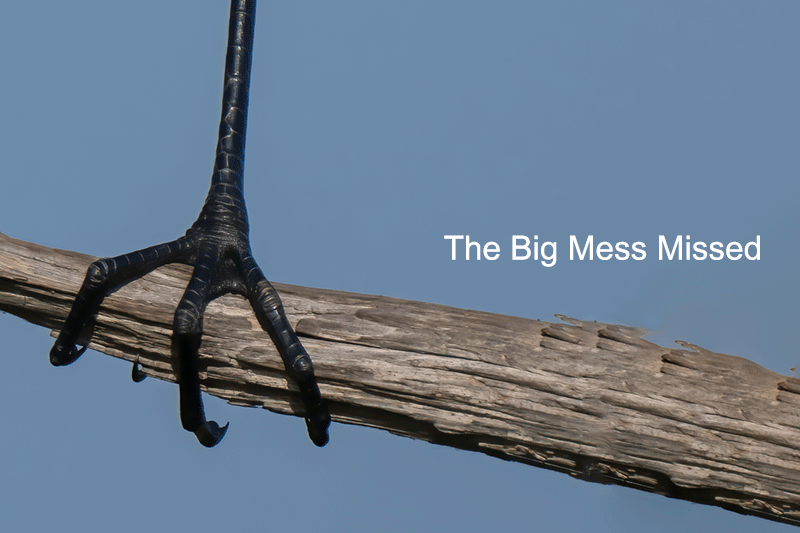
|
The Big Mess
I would have bet that I checked the branch after using Content-Aware Crop. But obviously, I had not. To repair the big mess, I used the Patch Tool, Content-Aware Fill, and the Clone Stamp Tool. The latter is a rarity for me.
|
|
The BIRDS AS ART Current Workflow e-Guide (Digital Basics II).You can order your copy from the BAA Online Store here, by sending a PayPal for $40 here, or by calling Jim or Jennifer weekdays at 863-692-0906 with your credit card in hand. Be sure to specify Digital Basics II. |
The BIRDS AS ART Current Workflow e-Guide (Digital Basics II)
All the techniques discussed here and tons more great Photoshop tips and techniques — along with my complete digital workflow, Digital Eye Doctor Techniques, and all my personalized Keyboard Shortcuts — are covered in detail in the BIRDS AS ART Current Workflow e-Guide (Digital Basics II), an instructional PDF that is sent via e-mail. Note: folks working on a PC and/or those who do not want to miss anything Photoshop may wish to purchase the original Digital Basics along with DB II while saving $15 by clicking here to buy the DB Bundle.
Folks who learn well by following along rather than by reading can check out the complete collection of MP 4 Photoshop Tutorial Videos by clicking here. Note: most of the videos are now priced at an amazingly low $5.00 each.
You can learn how and why I converted all of my Canon digital RAW files in DPP 4 in the DPP 4 RAW Conversion Guide here. More recently, I became proficient at converting my Nikon RAW (NEF) files in Adobe Camera Raw. About three years ago I began converting my Nikon and Sony RAW files in Capture One and did that for two years. You can learn more about Capture One in the Capture One Pro 12 Simplified MP4 Video here. The next step would be to get a copy of Arash Hazeghi’s “The Nikon Photographers’ Guide to Phase One Capture One Pro e-Guide” in the blog post here. Today, I convert my Sony raw files in Photoshop with Adobe Camera Raw.
You can learn advanced Quick Masking and advanced Layer Masking techniques in APTATS I & II. You can save $15 by purchasing the pair.
|
|
|
This image was created on 16 June 2022 down by the lake near my home at Indian Lake Estates, FL. Working from the driver’s seat of my SUV, I used the BLUBB-supported Sony FE 600mm f/4 GM OSS lens, the Sony FE 2.0x Teleconverter, and The One, the Sony Alpha 1 Mirrorless Digital Camera). The exposure was determined via Zebra technology with ISO on the thumb dial. ISO 320. 1/1000 sec. at f/8 (wide open) in Manual mode. When evaluated in RawDigger, the raw file exposure was determined to be less than one-half stop too dark. AWB at 8:40:35am on sunny morning. Tracking: Spot S AF-C with Bird Face/Eye detection enabled performed just fine. Be sure to click on the image to enjoy a high-res version. Image #1C: The repaired version of the Great Egret — juvenile stretching on The Perch image |
It is Amazing …
It is amazing to me how often folks here on the blog and especially in the Avian Forum at BirdPhotographer’s.Net (BPN) make suggestions that help me to improve my images. If they can help a 39-year veteran bird photography, think how much you could learn …
Flight Photography at Jacksonville Till You Can’t Lift Your Lens! with Arthur Morris/BIRDS AS ART
Join me on the beach at Huguenot Memorial Park to learn about photographing terns in flight. 8,000 pairs of Royal Terns nest there and there are birds in the air all the time, often carrying all kinds of fish and crabs for their young. Learn about how the relationship between the wind and the sun impacts flight photography and about the best gear for shooting birds in flight. Join me on a workshop at Jacksonville this summer.
Cute & Beautiful: Photographing Chicks in Jacksonville, FL with Arthur Morris/BIRDS AS ART
There is an amazing beach near Jacksonville, FL where 8,000 pairs of Royal Terns and 12,000 pairs of Laughing Gulls (along with a few other species) breed each summer. As this video shows, photographing the chicks is easy in the summer. And there is tons of great flight photography as well. If you want to improve your bird photography skills, consider joining me on an Instructional Photo-Tour (IPT).
|
|
|
Click on the composite image to enjoy the incredible quality of the hi-res JPEG. Clockwise from upper left clockwise and back around to the center: Royal Tern in flight with squid for chick; Royal Tern chick on beach; Royal Tern in flight with shrimp for young; Royal Tern chick — double overhead wing stretch; Royal Tern landing with greenback for chick; Royal Tern in flight with juvenile mahi mahi for chick; Brown Pelican — large chick preening; Laughing Gull in fresh juvenal plumage; Royal Tern chick begging; Many Royal Terns with many chicks on face of dune. |
Jacksonville IPT #1: 4 FULL DAYS — the afternoon of FRI 1 JULY thru the morning of TUES 5 July 2022: $2099.00 (Limit 6 photographers/Openings: 5)
Jacksonville IPT #2: 4 FULL DAYS — the afternoon of FRI 15 JULY thru the morning of TUES 19 July 2022: $2099.00 (Limit 6 photographers/Openings: 5)
The first three folks to register on each trip can ride to and on and from the beach with me for no charge.
Jacksonville IPT #2: 4 FULL DAYS — the afternoon of FRI 15 JULY thru the morning of TUES 19 July 2022: $2099.00 (Limit 6 photographers/Openings: 5)
The first three folks to register on each trip can ride to and on and from the beach with me for no charge.
I first visited the breeding bird colony at Jacksonville in late June 2021. I was astounded. There were many thousands of pairs of Royal Terns nesting along with about 10,000 pairs of Laughing Gulls. In addition to the royals, there were some Sandwich Terns nesting. And there are several dozen pairs of Brown Pelicans nesting on the ground. Flight photography was non-stop astounding. And photographing the tern chicks was relatively easy. Folks could do the whole trip with the Sony 200-600, the Canon 100-500 RF, or the Nikon 500 PF or 200-500 VR. With a TC in your pocket for use on sunny days. Most of the action is within 100 yards of where we park (on the beach). As with all bird photography, there are times when a super-telephoto lens with either TC is the best tool for the job.
Morning sessions will average about three 1/2 hours, afternoon sessions about 1 1/2 hours. On cloudy mornings with favorable winds, we may opt to stay out for one long session and skip the afternoon, especially when the afternoon forecast is poor. Lunch is included on the first three days of the IPT and will be served at my AirBnB. We will do image review and Photoshop after lunch.
We will be based somewhere west and a bit north of Jacksonville where there are many AirBnB possibilities. The deposit is $599.00. Call Jim at the office any weekday at 863-692-0906 to pay by credit card. Balances must be paid by check.
|
|
|
Click on the composite image to enjoy the incredible quality of the hi-res JPEG. Clockwise from upper left clockwise and back around to the center: Royal Tern feeding chick; Royal Tern/4-week-old chick; ink-stained Royal Tern in flight with squid for chick; Royal Tern/3-week-old chick begging; Brown Pelican in flight on white sky day; fresh juvenile Laughing Gull on clean beach; Laughing Gulls stealing fish from Royal Tern; tight shot of Royal Tern in flight with fish for young. |
What You Will Learn on a Jacksonville IPT
- 1- First and foremast you will learn to become a better flight photographer. Much better.
- 2-You will learn the basics and fine points of digital exposure. Nikon and Canon folks will learn to get the right exposure every time after making a single test exposure, and SONY folks will learn to use Zebras so that they can be sure of making excellent exposures before pressing the shutter button.
- 3- You will learn to work in Manual exposure mode even if you fear it.
- 4- You will learn to evaluate wind and sky conditions and understand how they affect bird photography, especially the photography of birds in flight.
- 5- You will learn several pro secrets (for each system) that will help you to become a better flight photographer.
- 6- You will learn to zoom out in advance (because the birds are so close!) 🙂
- 7- You will learn how to approach free and wild birds without disturbing them.
- 8- You will learn to spot the good and the great situations.
- 9- You will learn to understand and predict bird behavior.
- 10- You will learn to design pleasing images by mastering your camera’s AF system.
- 11- You will learn to choose the best perspective.
- 12- You will learn to see and control your backgrounds.
- 13- You will learn to see and understand the light.
- 14- You will learn to see and create pleasing blurs in pre-dawn situations.
- 15- You will learn to be ready for the most likely event.
The best news is that you will be able to take everything you learn home with you so that you will be a better photographer wherever you are and whenever you photograph.
Typos
With all blog posts, feel free to e-mail or to leave a comment regarding any typos or errors.

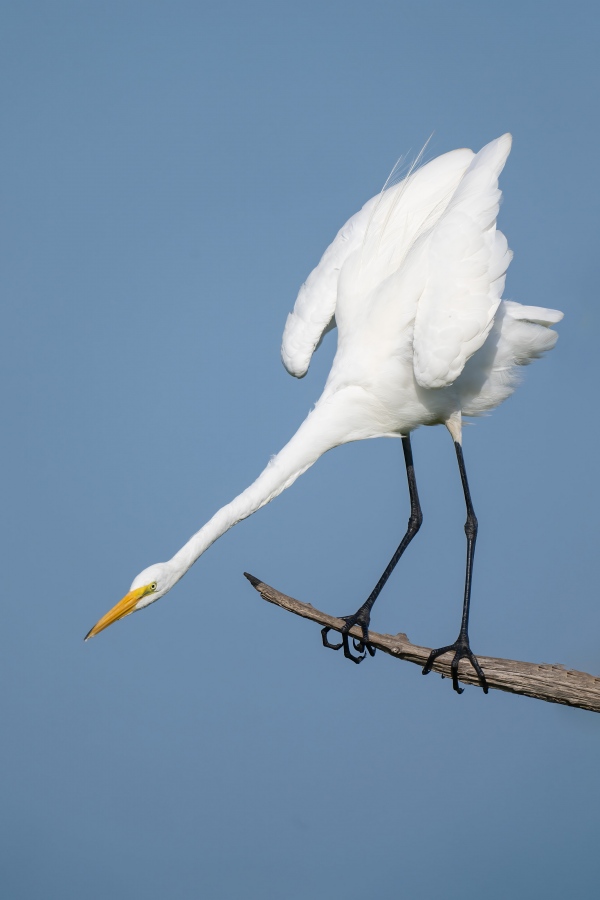
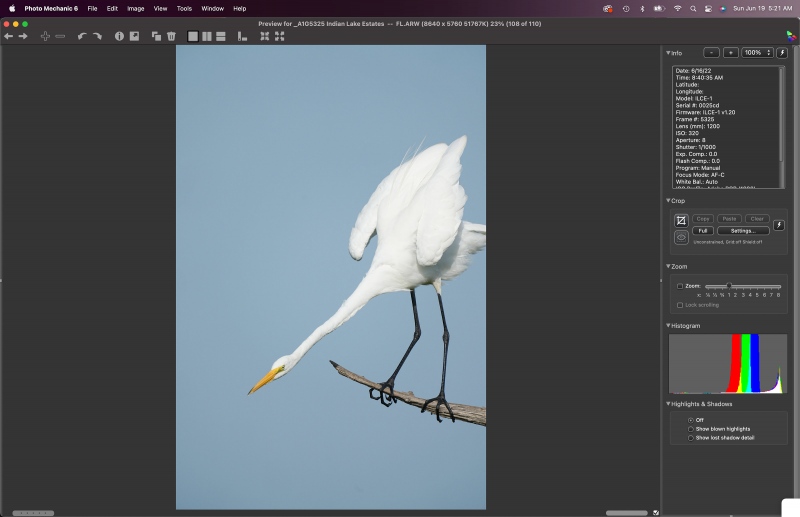

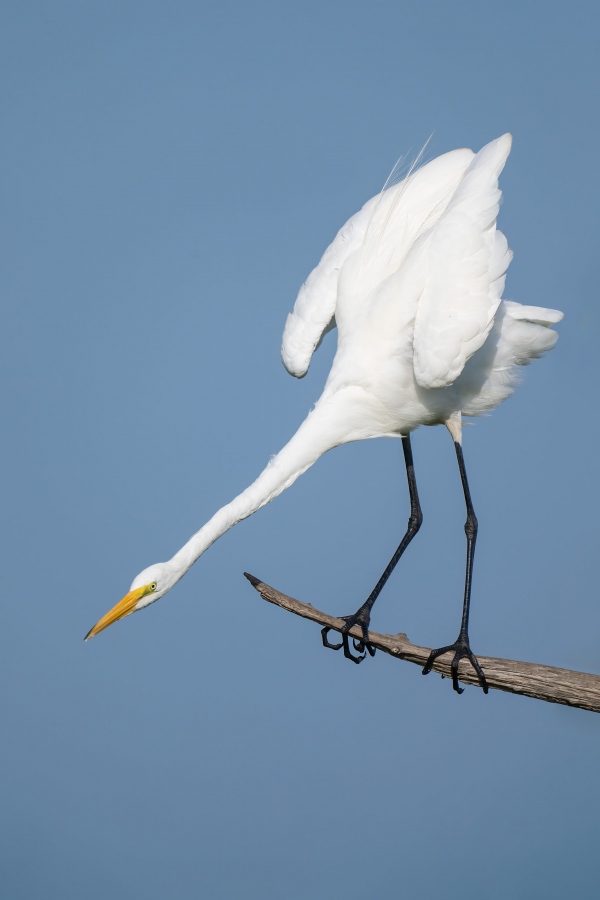
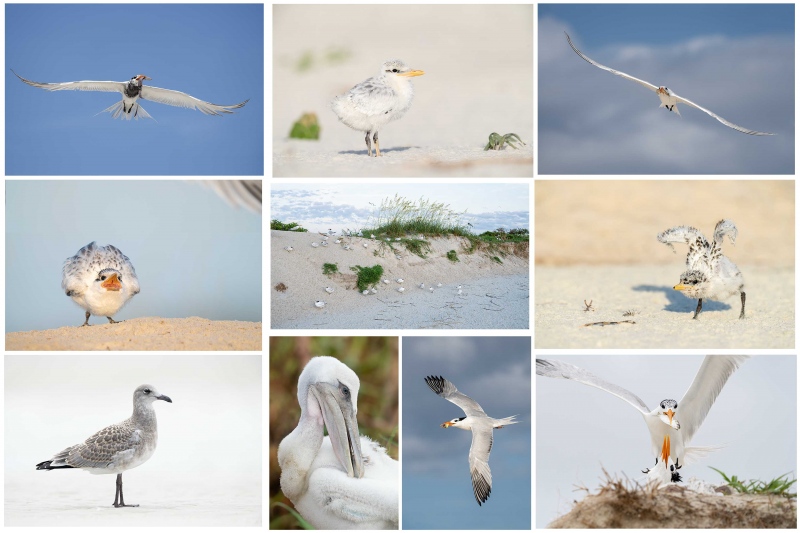
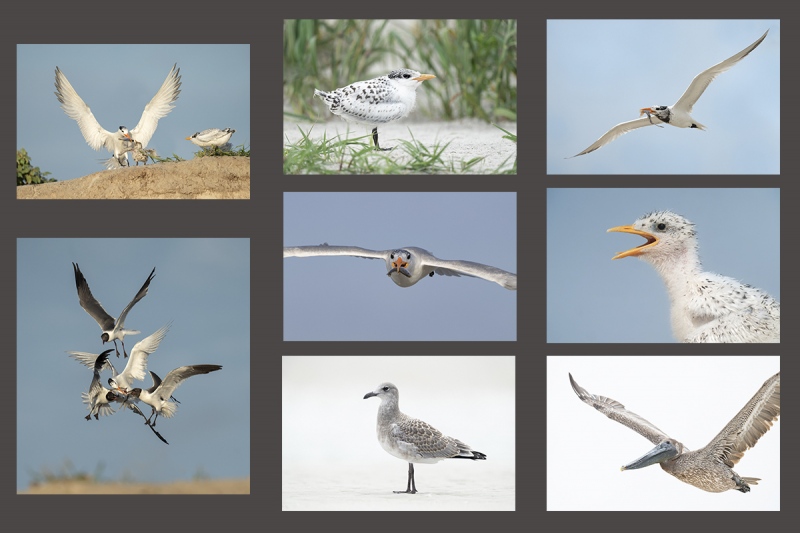













Happy Fathers day Artie!!!!!